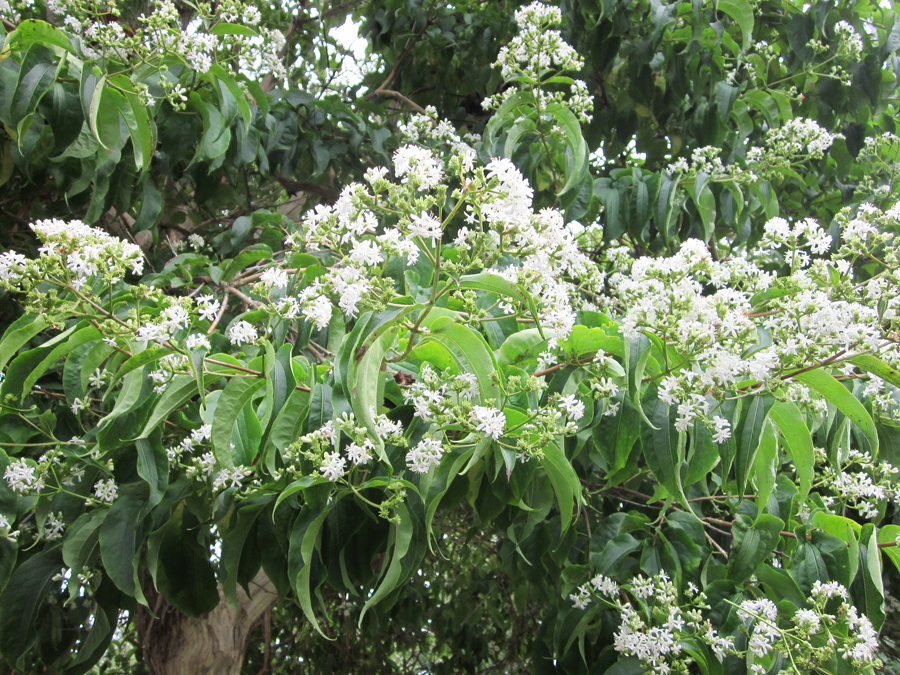
Originally introduced from China, the Seven-son tree (Heptacodium miconioides) has become very popular in the U.S., especially in the Northeast.
Members of the Caprifoliaceae family, they have fragrant white blooms that appear in late summer.
The small, star-shaped flowers are produced in seven whorls, which refer to the tree’s common name.
It is hardy up to Zone 4 and can grow in part shade or full sun. In autumn, after the flowers fade, small, red-purple fruits appear. It has excellent deer resistance.
Many people consider it to be a large shrub rather than a tree. After its petals fall, the pink sepals remain giving the appearance that it is “in flower” again. The unique whitish-tan bark peels off in strips and is quite interesting.
Its “preference” is acid, moist, well-drained soil, but it will tolerate alkaline or clay soil. It is deciduous, seasonally losing all its leaves.
It may be pruned from late fall through very early spring, as its flower buds are formed in the spring.
During the growing season, it’s considered “a magnet for pollinators,” drawing in bees and butterflies with its nectar-rich blooms.
It’s a winner for sure!

